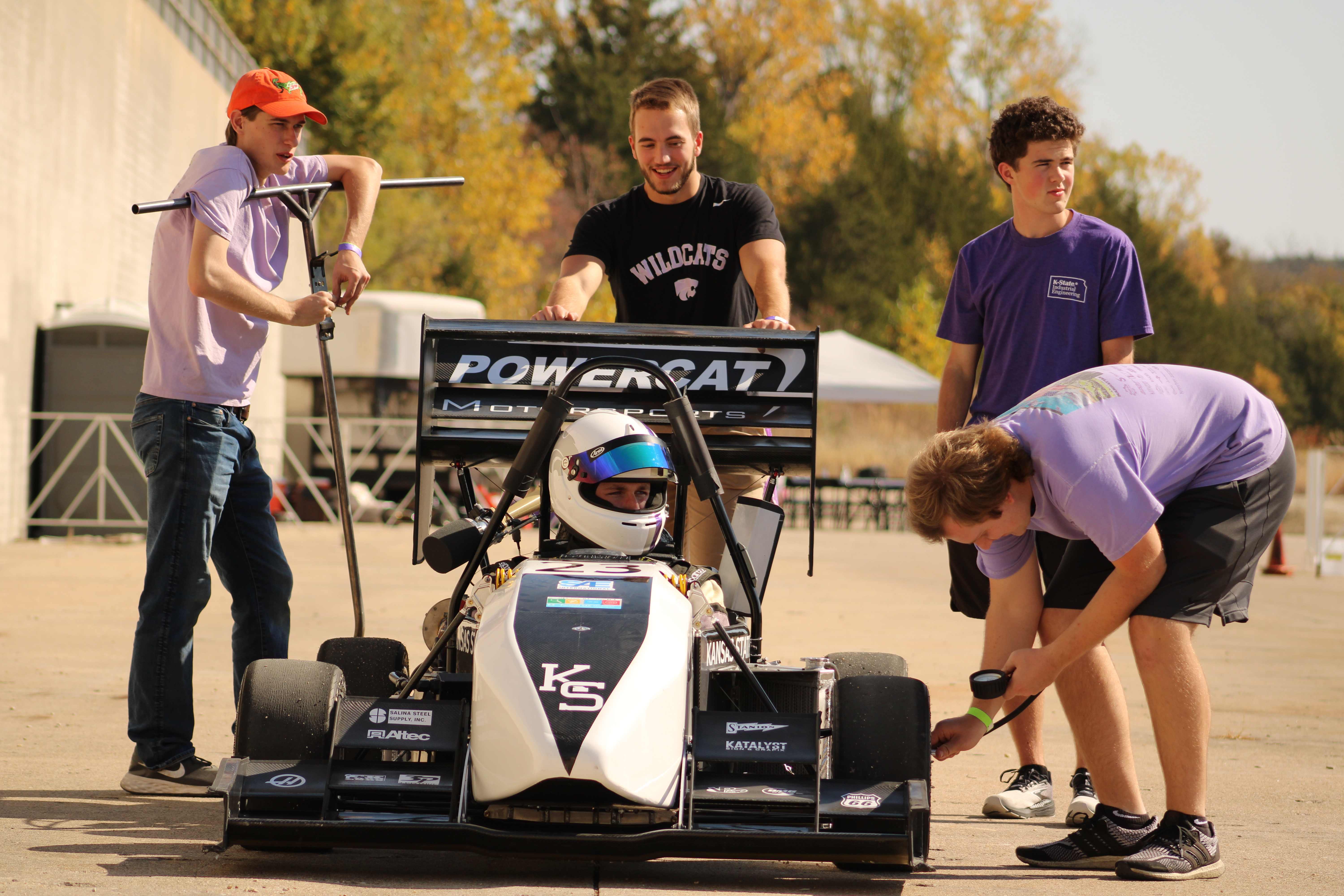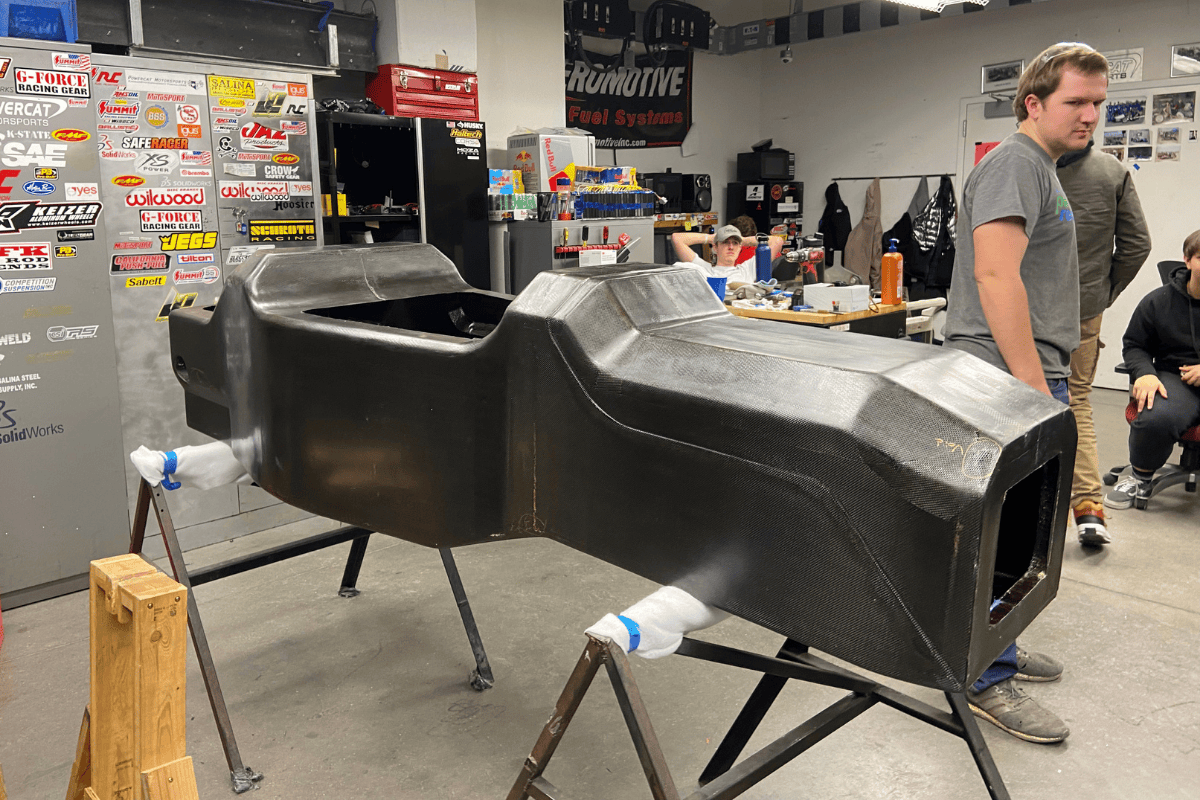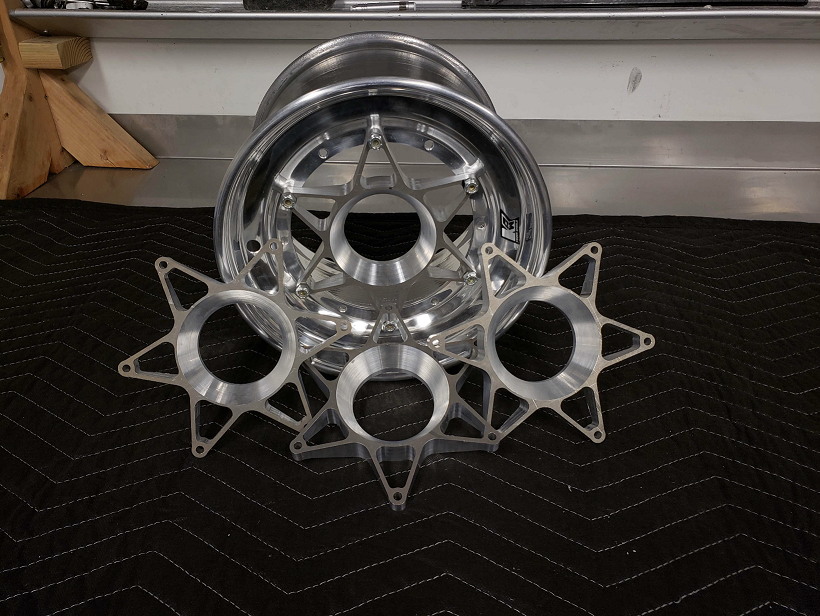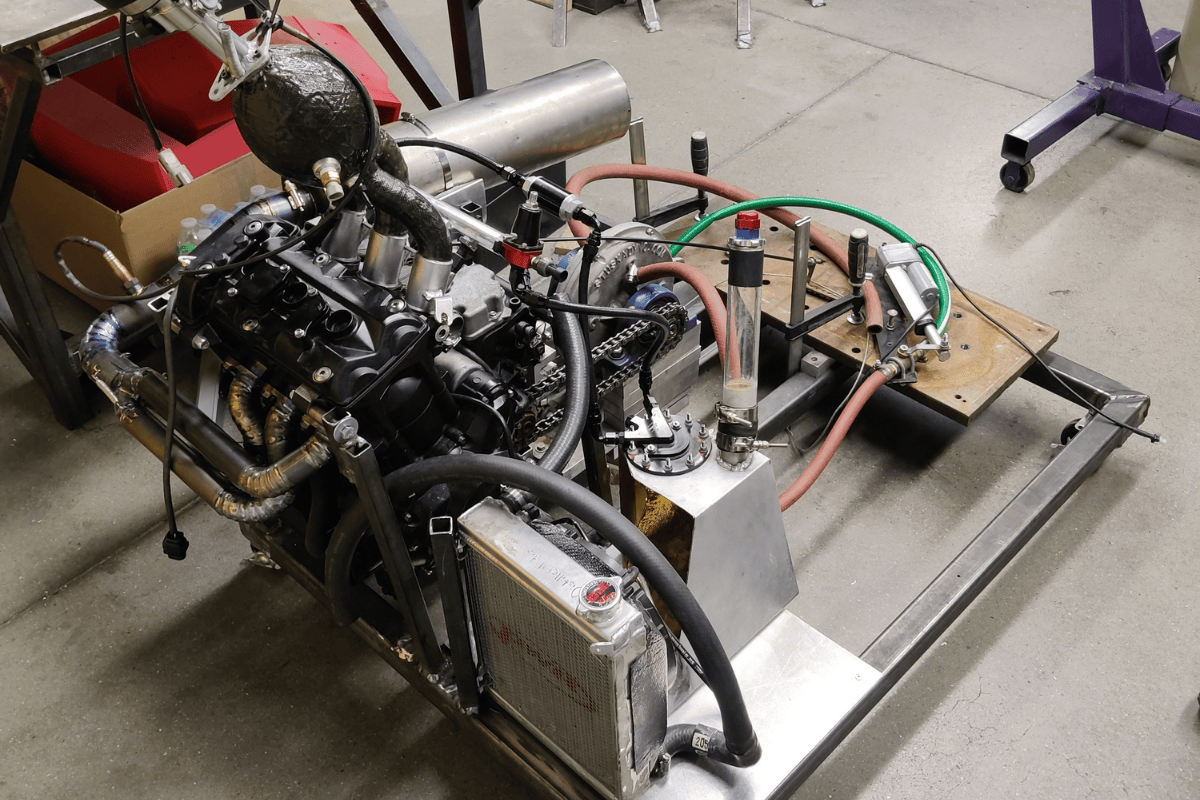The Design Process
Overview
Racecars are finely tuned machines designed to be driven on the edge. The performance goal for a racecar is to produce the maximum usable horsepower and translate it efficiently through the drivetrain and onto the soft racing tires gripping the track. At speed, the racecar must use the wings, ground effects, and other aerodynamic techniques to produce the desired amount of grip. The suspension must optimally balance all varying applied loads to each tire, which enables the driver to push the car to its limit. A racecar must be compatible, functionable, and responsive to perform well at high speeds. Overall, the compatibility of the car is measured by our use of system integration. The overall goal for each system leader is to consider their system and how its design affects other systems of the car. All systems depend on one another.
Project Management
Designing a competitive racecar is challenging, but even more challenging is completing every bit of manufacturing, testing, and iteration before competition in May. Throughout the year team leaders must layout a project timeline, meet team deadlines, then execute their goals. Project Management is one of the best attributes of Formula SAE, because it can be applied to all industries.
Computer Modeling, Simulation, and Analysis
A pivotal piece of the design process is first creating a 3-D computer model of the car in Solidworks. We spend an extensive amount of time accurately modeling the car within Solidworks. The allows us to save time during manufacturing while ensuring a higher quality finished product. The use of a 3-D model allows for much more dynamic iterations in the design phase, since changes are just a few clicks away. To optimize component structures, finite element analysis (FEA) software is used. Finite element analysis helps us determine how designs will hold up to mechanical stress and vibration, fatigue, motion, heat transfer, and more factors. Another form of analysis used by the team is computational fluid dynamics (CFD), which allows us to simulate fluid flows for our aerodynamics package.



